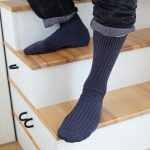
The Role of Genetics in Spider and Varicose Vein Development
Spider veins and varicose veins are common conditions that affect millions of people worldwide. While lifestyle factors and age can contribute to their development, genetics also play a significant role in determining an individual’s susceptibility to these vein disorders. In this blog post, we will explore the influence of genetics on the development of spider and varicose veins, helping you understand the importance of familial factors in these conditions.
Genetic Predisposition:
Genetic predisposition refers to an increased likelihood of developing certain conditions based on inherited genes. Studies have shown that if your parents or close relatives have a history of spider veins or varicose veins, you may be at a higher risk of developing them yourself. Genetic factors can influence the strength and integrity of the vein walls and valves, which can impact vein function and increase the chances of developing vein disorders.
Weakness in Vein Walls:
Genetic variations can affect the structure and strength of vein walls. Weaker vein walls can contribute to the formation of spider and varicose veins as they are more prone to dilate and allow blood to pool, leading to visible veins near the skin’s surface. If you have inherited genetic factors that contribute to weak vein walls, you may be more susceptible to developing these conditions.
Valve Dysfunction:
Veins contain one-way valves that help regulate blood flow by preventing backward flow. Genetic factors can influence the integrity and function of these valves, making them less efficient in directing blood flow back to the heart. When valves fail to function properly, blood can pool in the veins, increasing pressure and causing them to become enlarged and distorted.
Connective Tissue Disorders:
Certain genetic disorders affecting connective tissues, such as Ehlers-Danlos syndrome and Marfan syndrome, can predispose individuals to vein abnormalities and weaken vein walls. These conditions can contribute to the development of spider veins and varicose veins at a younger age and may require specialized management.
Gender and Hormonal Influences:
Research suggests that genetics, combined with hormonal factors, may increase the risk of developing spider and varicose veins, particularly in women. Hormonal changes during pregnancy, menopause, or the use of hormone replacement therapy can affect vein elasticity and function, making women more susceptible to vein disorders.
Managing Genetic Risk Factors:
While we cannot change our genetic makeup, understanding the role of genetics in spider and varicose vein development can help individuals at higher risk take preventive measures and seek early intervention. Lifestyle modifications, such as regular exercise, maintaining a healthy weight, elevating legs when resting, avoiding prolonged sitting or standing, and wearing compression stockings, can help manage symptoms and reduce the risk of progression.
Genetics play a significant role in the development of spider veins and varicose veins. Inherited factors can influence vein wall strength, valve function, and connective tissue integrity, making certain individuals more susceptible to these conditions. Understanding your genetic predisposition can help you take proactive steps to prevent or manage spider and varicose veins. If you have a family history of these vein disorders, it is advisable to consult with a healthcare professional who can provide personalized recommendations for prevention, lifestyle modifications, and potential treatment options.



